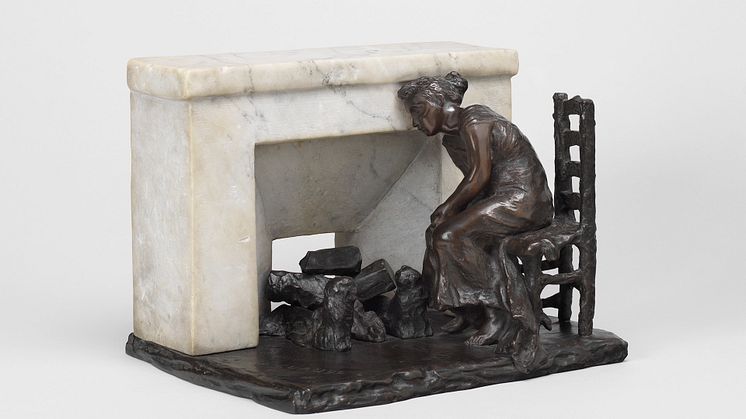
Press release -
Nationalmuseum acquires Camille Claudel sculpture
Nationalmuseum has acquired its first sculpture by Camille Claudel, one of the most groundbreaking artists of the late 19th century. In her sculptures, Claudel explored her creativity and her lived experience, developing a highly personal style that broke with tradition. This prestigious acquisition symbolises the culmination of Nationalmuseum’s multiyear project focusing on female sculptors.
Camille Claudel (1864–1943) was for many years the pupil, assistant and partner of Auguste Rodin (1840–1917), and their connection had a major influence on her. During a relationship lasting almost fifteen years, and more especially after their separation, Claudel developed a personal style of art featuring sensitive modelling and pioneering compositions and techniques.
As an exhibitor at the Paris Salons, Claudel was active in a growing art market where female sculptors from all over the world, notably including the Nordic countries, were playing an increasingly important role. Around the turn of the century, she produced small-scale works that she described as “sketches from nature”. The sculpture Rêve au coin du feu (‘Fireside’) was created in 1899. Soon after, Claudel met Eugène Blot, a founder and dealer who acquired the rights to make casts of her sculptures for the commercial market. Rêve au coin du feu, was first offered for sale in 1905, and originally served as a lamp. “I created a bestseller by putting a red lightbulb behind the logs in these fireplaces, especially the first one, and transforming them into nightlights,” the artist later recalled.
Although Claudel enjoyed some commercial success, over time she found herself in financial difficulties. Her behaviour went beyond the boundaries of what was considered acceptable for a woman at the time, which further complicated her life. She developed mental health issues and in 1913 she was confined to a mental hospital where she remained until her death 30 years later.
“It’s fantastic to finally have a Camille Claudel sculpture in our collection here at Nationalmuseum,” said Linda Hinners, the museum’s sculpture curator. “Despite its diminutive size, Rêve au coin du feu has a certain grandeur. The subject matter is conventional and yet brilliant in its immediacy. Within the apparent simplicity lies a dreamlike complexity.”
Nationalmuseum receives no state funds with which to acquire design, applied art and artwork; instead the collections are enriched through donations and gifts from private foundations and trusts. This acquisition was funded by generous donations from the Friends of Nationalmuseum and the Hedda and N.D. Qvist bequest.
Inventory number
Camille Claudel, Rêve au coin du feu, 1899–1905. White, grey-veined marble and bronze. N°16 sand casting Eugène Blot. Signed: C. CLAUDEL. Foundry stamp: EUG. BLOT / PARIS / 16. NMSk 2418.
Media enquiries
Linda Hinners, curator of sculpture, linda.hinners@nationalmuseum.se, +46 8 5195 4404
Hanna Tottmar, head of press, press@nationalmuseum.se, +46 8 5195 4400
Categories
Nationalmuseum is Sweden’s museum of art and design. The collections comprise some 700 000 objects, including paintings, sculpture, drawings and graphic art from the 16th century up to the beginning of the 20th century and the collection of applied art and design up to the present day. Nationalmuseum is a government authority with a mandate to preserve cultural heritage and promote art, interest in art and knowledge of art.

